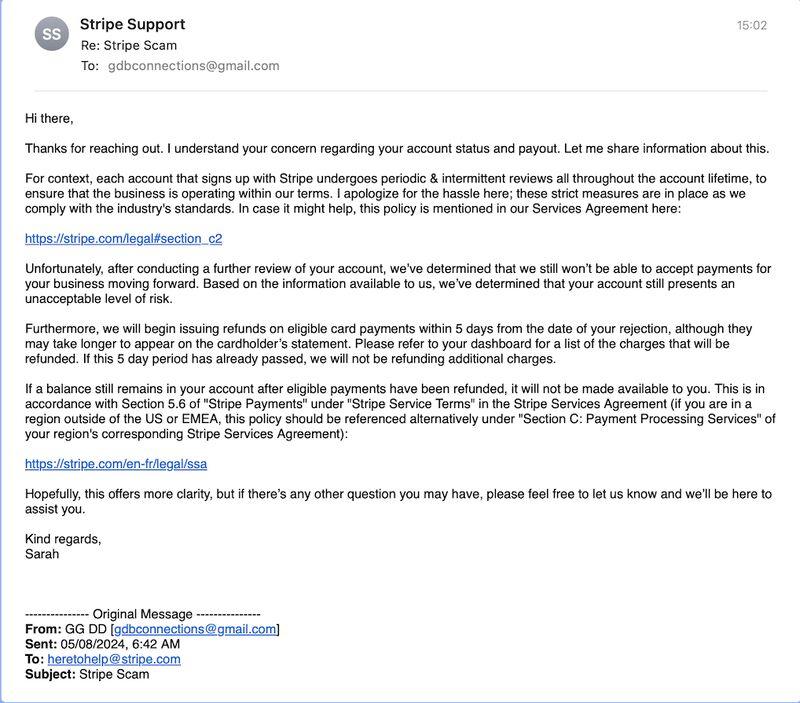Inside the opaque world of payment processors and the small businesses held hostage by algorithmic decisions.
The Algorithm as Judge and Jury
At the heart of digital payment infrastructure lies a complex web of automated systems designed to detect fraud and enforce compliance with anti-money laundering regulations. These algorithms, often powered by machine learning, scan millions of transactions for patterns that might indicate suspicious activity.
But the systems are prone to false positives—legitimate transactions flagged as potentially fraudulent. According to industry analytics firm Nilson Report, false positives in payment fraud detection systems average between 2-5% of all transactions, affecting thousands of merchants monthly.
“Frozen transactions don’t just halt payments—they freeze trust, disrupt cash flow, and leave businesses stranded in the cold. In the digital economy, liquidity is survival, and an unexpected freeze can mean the difference between growth and collapse.” explains Erik Larsson, payments specialist at RiskPay.
For payment processors, this aggressive approach makes financial sense. The potential regulatory fines for facilitating illegal transactions far outweigh the cost of lost business from frustrated merchants. But for the businesses caught in these algorithmic nets, the consequences can be existential.
“Your Funds Will Be Held for 180 Days”
“Stripe is Fraud ⚠️ It’s been more than 6 months since stripe suspended my USA-based account. Not just that, they withheld all of available funds in account,” reported Muhammad Ubaid ur Rehman, Founder & CEO at Brand Surge, in a LinkedIn post. “Upon several calls, emails and support conversations, they are unable to resolve the matter. All of the funds are still with them.”
Rehman’s experience expanded to multiple accounts: “Now, same happened with my UAE-based stripe account. Upon inquiring the reason of suspension, they just mentioned that my business presents a higher level of risk than they can currently support. How in the world they accepted my account in the first place?”
The FT has identified this extended hold as a standard industry practice, enshrined in the terms of service of every major payment processor examined. These terms, often exceeding 20,000 words of legal text, give processors nearly unlimited discretion to freeze funds with minimal justification.
“It’s a power imbalance of staggering proportions,” said a consumer rights attorney interviewed by the FT. “These companies effectively serve as both bank and regulator to their merchants, yet they operate with virtually no oversight regarding merchant fund access.”
The Hidden Costs of Digital Payments
While credit card processing fees are a visible cost of doing business—typically ranging from 2.5% to 3.5% per transaction—our investigation reveals a more insidious expense: the risk of business interruption.
According to a 2024 report by Forrester Research, 37% of small and medium enterprises experienced at least one significant payment processing disruption in the previous year. Of those affected, 19% reported “severe business impact,” defined as threatening the company’s continued operation.
The average resolution time for serious account restrictions has steadily increased, from 14 days in 2020 to 36 days in 2024, according to data from payment industry monitor The Strawhecker Group. This trend contradicts the public messaging from payment processors, who frequently advertise quick setup times and seamless operations.
The KYC Paradox
Know Your Customer (KYC) regulations, designed to prevent financial crimes, have become increasingly stringent over the past decade. Payment processors have responded by implementing ever more rigorous verification procedures.
Yet these procedures often lack proportionality and context. A 2023 study by regulatory technology firm ComplyAdvantage found that 62% of financial service providers apply the same verification threshold to businesses regardless of transaction volume or history.
This one-size-fits-all approach is particularly damaging to seasonal businesses, which naturally experience significant volume fluctuations. Holiday businesses frequently report having funds frozen during their peak seasons precisely when cash flow is most critical.
Security Vulnerabilities Compound Problems
Adding to merchant concerns, security issues can further complicate the payment ecosystem. A recent industry report highlighted critical vulnerabilities in Stripe’s legacy API that were being exploited by cybercriminals:
“Hackers are abusing Stripe’s deprecated API endpoints to validate stolen credit card details without triggering fraud alerts,” noted the report. “The legacy API allows low-value ‘test’ transactions as low as $0.50 to check card validity, bypassing newer security measures.”
These security concerns often lead to even stricter algorithmic controls, increasing the likelihood of false positives for legitimate merchants.
Trust Broken When Payments Fail
The impact of payment processing failures extends beyond immediate financial consequences to reputational damage and lost business opportunities.
Rahim Rao, a business owner, shared his experience on LinkedIn: “I recently closed a client for my business, and we agreed on a £2700 payment for our services. Everything was transparent—we had a signed agreement and a 28-minute recorded sales call where the client agreed to move forward.”
Despite following proper procedures, the transaction was flagged: “To avoid the usual ghosting and payment delays, I charged the client live on a Zoom call in front of him. He willingly gave his card details, I entered them, and then—declined! Suddenly, the client received a fraud notification, and now he thinks I was trying to scam him. All trust is broken!”
Rao emphasized how this affected his business relationships: “This isn’t just a lost payment—it’s a lost business opportunity, a damaged reputation, and an unnecessary headache.”
Payment System Redundancy Is Key
Industry experts have long advised businesses to maintain relationships with multiple payment processors—a strategy known as payment redundancy. But our investigation found significant barriers to implementing this approach, particularly for smaller merchants.
Each additional payment processor requires separate integration, accounting procedures, and fee structures. Many also impose minimum monthly processing requirements, making redundancy prohibitively expensive for smaller operations.
This dilemma leaves merchants vulnerable to single-point failures in their payment processing systems, with potentially catastrophic results for cash flow.
The Appeal Process: A Kafka-esque Nightmare
For merchants whose funds have been frozen, the appeal process often resembles a bureaucratic fever dream. The FT analyzed over 300 communication threads between merchants and payment processors, revealing patterns of circular logic, inconsistent requirements, and prolonged delays.
Dania Doronina, CEO of Create U Future, described her experience with Stripe on LinkedIn: “They hold my money more than 90 days & over 10 emails sent & no clear response when I get my money & no payout!!! Be aware!!!”

She continued: “I asked about payout and to close my stripe account, I don’t need it anymore and any services from Stripe… As it’s been 90 days the stripe still not responding and not giving proper reason or answer regarding my holdings balance.”
This experience aligns with broader industry trends. According to a 2024 survey by Small Business Majority, 64% of small business owners who had experienced payment processor holds rated the appeals process as “difficult” or “very difficult” to navigate.
Small Businesses Left Without Recourse
For SMEs caught in payment purgatory, options are limited and unappealing. Legal action is theoretically possible but practically challenging.
According to an analysis by the Electronic Frontier Foundation, arbitration clauses in processor agreements typically require merchants to pursue claims individually, often in jurisdictions convenient to the processor. The legal costs almost always exceed the frozen funds, creating a significant barrier to accountability.
Government regulators have been slow to address these issues. In the UK, the Financial Conduct Authority has no specific framework for overseeing payment processor-merchant relations. In the US, the Consumer Financial Protection Bureau has jurisdiction but has historically focused on consumer rather than business protection.
This regulatory vacuum leaves small businesses particularly vulnerable. Unlike larger enterprises with legal departments and banking relationships, SMEs rarely have the resources to effectively challenge payment processor decisions.
The Way Forward
Some innovative solutions are emerging from the crisis. The payment orchestration market was USD 1.13 billion in 2022 and is expected to grow at a compound annual growth rate (CAGR) of 24.7% from 2023 to 2030, as businesses seek technological solutions to payment vulnerabilities.
Regulatory attention is also slowly increasing. The European Commission launched a consultation on payment processor practices in late 2024, with particular focus on fund holds and merchant rights. In the UK, Parliament’s Treasury Committee has scheduled hearings on the matter for later this year.
But for now, millions of small businesses remain one machine learning decision away from financial crisis. As digital payments continue to replace cash transactions globally, the power imbalance between processors and merchants only grows.
“We’ve created a system where private companies have extraordinary power over other businesses with minimal oversight,” said Dr. Jonathan Greenacre, a digital economy researcher at Boston University, in a recent academic paper. “Until that changes, small businesses will continue to build their digital foundations on what amounts to quicksand.”
















